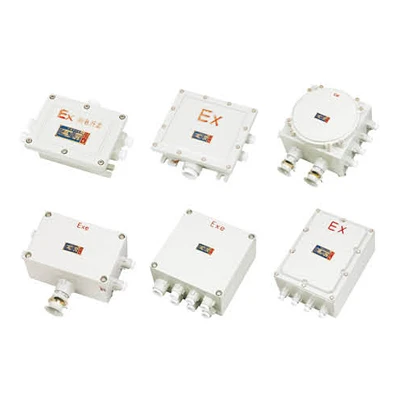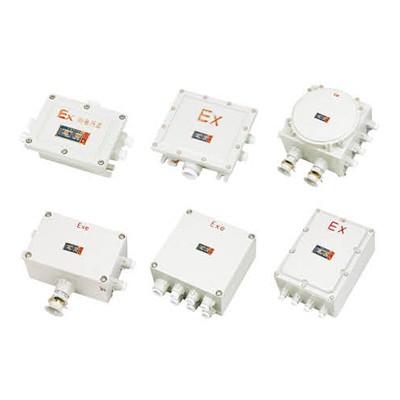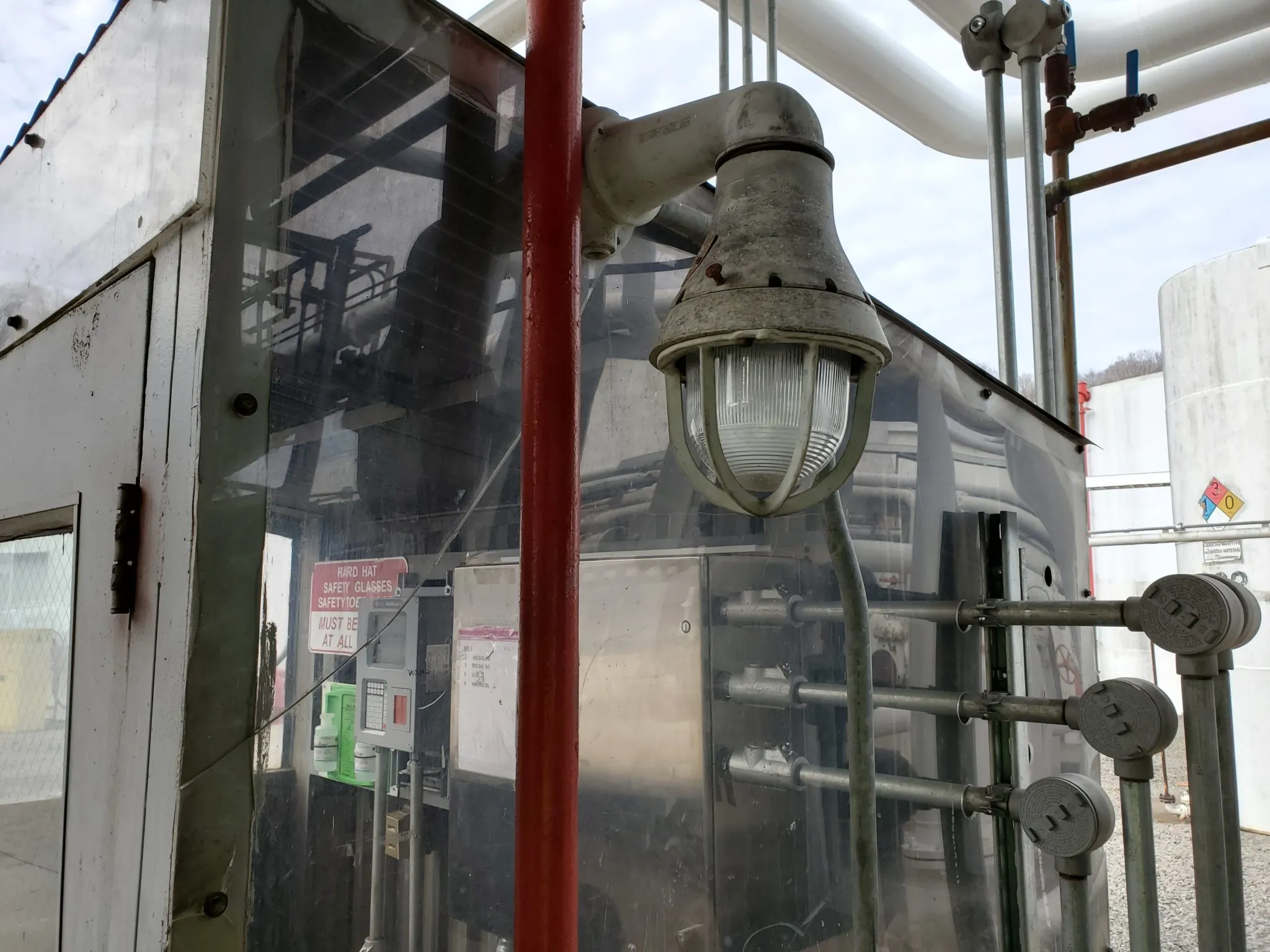Introduction

Understanding the classifications is crucial for safety when working in hazardous areas. Choosing the right class 1 division 2 enclosure is essential to ensure protection from potential explosions. When selecting an enclosure, key factors include environmental conditions, size and configuration, and material and construction.
Understanding Hazardous Area Classifications
Hazardous area classifications are used to identify the level of risk in a particular environment. Class 1 Division 2 electrical requirements must be met to ensure safety in these areas. It is important to understand the hazardous area classification chart to determine the appropriate level of protection needed.
Choosing the right enclosure is crucial in ensuring the safety of electrical equipment in hazardous areas. The enclosure must be able to withstand the specific conditions of the environment, such as exposure to flammable gases or combustible dust. It should also protect against potential ignition sources to prevent accidents and explosions. Therefore, understanding the hazardous area classification chart is essential for selecting the appropriate enclosure that meets the area's specific requirements.
Importance of Choosing the Right Enclosure
The importance of choosing the right class 1 div 2 enclosure cannot be overstated to ensure safety in hazardous environments. An explosion-proof enclosure is designed to contain any potential explosion within its structure, protecting personnel and equipment from harm.
Choosing the right class 1 div 2 enclosure is crucial for maintaining a safe work environment in hazardous areas. These enclosures are designed to prevent any potential explosion from causing harm to personnel and equipment. By containing the explosion within its structure, these enclosures play a vital role in minimizing the risk of injury and damage in industrial settings.
Key Factors to Consider When Selecting an Enclosure
Selecting the perfect enclosure for hazardous areas goes beyond simple protection; it's about ensuring safety, compliance, and optimal functionality. Here's a breakdown of key factors to consider when making your choice:
Meeting the Safety Standards
- Class 1 Div 2 Compliance: This is a crucial factor. Class 1 Div 2 signifies the enclosure is suitable for areas where flammable gases, vapors, or liquids are likely to be present under abnormal conditions. Ensure the enclosure meets the specific Class and Division requirements for your application.
Environmental Considerations
- Temperature Extremes: Will the enclosure face extreme heat or cold? Consider the operating temperature range of the equipment housed within and choose an enclosure material that can withstand the ambient environment.
- Humidity and Moisture: High humidity or direct water exposure can damage equipment. Look for enclosures with NEMA ratings that indicate their resistance to water ingress.
- Dust and Debris: Dusty environments can compromise equipment functionality. Select an enclosure with a proper IP rating that signifies its protection level against dust particles.
Enclosure Design and Construction
- Material Matters: The enclosure material should be durable and corrosion-resistant. Common options include stainless steel, aluminum, or fiberglass-reinforced polyester, each with varying strengths for specific environments.
- Size and Configuration: Choose an enclosure with ample space to comfortably accommodate the equipment, allowing for proper ventilation and future maintenance needs. Consider ease of access for wiring and connections.
- Protection from External Hazards: The enclosure design should protect against dust, moisture, and other environmental threats that could harm the equipment inside. Look for features like tight seals, gasketed doors, and proper ventilation.
Additional Considerations
- Heat Dissipation: If your equipment generates significant heat, choose an enclosure with proper ventilation or heat dissipation features to prevent overheating.
- Explosion-Proof Needs: In areas with a high risk of explosions, a standard enclosure might not suffice. Consider an explosion-proof enclosure designed to contain any internal blasts and prevent them from igniting the surrounding atmosphere.
By carefully evaluating these factors and aligning them with your specific hazardous area application, you can select the right enclosure that offers optimal protection, meets safety regulations, and ensures the smooth operation of your equipment. Remember, the right enclosure invests in safety, compliance, and long-term functionality.
Exploring Class 1 Division 2 Enclosures

When it comes to hazardous areas, the importance of a reliable class 1 division 2 enclosure cannot be overstated. These enclosures are specifically designed to contain any potential explosion within the unit, ensuring the safety of personnel and equipment in these high-risk environments.
Definition and Purpose of Class 1 Division 2 Enclosures
A class 1 division 2 enclosure is a specially designed housing that protects electrical components in hazardous locations where flammable gases or vapors may be present. The purpose of these enclosures is to prevent any potential ignition source within the enclosure from igniting the surrounding atmosphere, thus minimizing the risk of an explosion.
A class 1 division 2 enclosure is essential in industries where flammable gases or vapors pose a significant risk. These specially designed housings are constructed to contain any potential ignition source, such as electrical components, and prevent it from coming into contact with the surrounding hazardous atmosphere. By minimizing the risk of ignition and subsequent explosion, these enclosures play a crucial role in ensuring the safety of personnel and equipment in such environments.
Class 1 Division 2 Electrical Requirements
Class 1 division 2 electrical requirements are stringent, as they must adhere to strict safety standards to ensure that electrical equipment does not become an ignition source in hazardous environments. This includes features such as robust construction, sealing techniques, and grounding requirements to prevent the entry of flammable gases or vapors into the enclosure.
Class 1 Division 2 enclosures come in various types to suit different electrical equipment and environmental conditions. For example, explosion-proof enclosures are designed to contain and safely release any internal explosion, preventing it from igniting the surrounding atmosphere. Additionally, there are purged and pressurized enclosures that use inert gas or air to create a safe environment within the enclosure, keeping out hazardous gases or vapors.
Types of Class 1 Division 2 Enclosures
Various types of class 1 division 2 enclosures are available, each designed for specific applications and environmental conditions. These can include explosion-proof electrical boxes, junction boxes, control panels, and motor starters, all tailored to meet the unique needs of different industries and hazardous areas.
In addition to the standard types of class 1 division 2 enclosures, there are also custom options available for businesses with unique requirements. These custom enclosures can be designed and manufactured to fit specific dimensions, accommodate specialized equipment, or meet particular safety standards. This flexibility allows companies to ensure that their electrical components are properly protected in hazardous environments without compromising on functionality or efficiency.
Meeting Safety Standards

Hazardous Area Classification Chart
When it comes to hazardous area classifications, it's crucial to understand the different zones and divisions to ensure the right enclosure is chosen for the specific environment. The hazardous area classification chart provides a clear overview of these zones and divisions, helping users identify the level of risk and select the appropriate class 1 division 2 enclosure.
Understanding the hazardous area classification chart is essential for ensuring safety in potentially dangerous environments. By identifying the different zones and divisions, users can accurately assess the level of risk and select the appropriate class 1 division 2 enclosure. This level of specificity is crucial for maintaining compliance with Class 1 Div 2 requirements and minimizing the potential for accidents or incidents in these areas.
Compliance with Class 1 Div 2 Requirements
Class 1 Division 2 electrical requirements must be strictly adhered to to ensure safety in hazardous locations where flammable gases or vapors may be present. To prevent potential hazards, it's essential that the chosen enclosure meets all Class 1 Division 2 requirements, including proper sealing and protection against potential sources of ignition.
It's also important to consider the environmental conditions in which the explosion-proof enclosures will be installed. Factors such as temperature, humidity, and exposure to corrosive materials can all impact the enclosure's performance. Therefore, thoroughly testing and certifying the enclosure for these specific environmental conditions is crucial to ensure its effectiveness in hazardous locations.
Certification and Testing for Explosion Proof Enclosures
Certification and testing play a vital role in ensuring the reliability and effectiveness of explosion proof enclosures. It's important to choose enclosures that have undergone rigorous testing and are certified to meet industry standards for safety in hazardous environments. This guarantees that the enclosure can contain any internal explosion without igniting surrounding gases or vapors.
Choosing an explosion proof enclosure that has been certified and tested to meet industry standards is crucial for ensuring the safety of personnel and equipment in hazardous environments. These enclosures are designed to withstand internal explosions without causing a chain reaction that could lead to catastrophic consequences. By selecting enclosures with proper certification, you can have peace of mind knowing that they have been thoroughly evaluated for their ability to contain explosions and prevent the ignition of surrounding gases or vapors.
Factors to Consider

When selecting a class 1 division 2 enclosure, various factors must be considered to ensure the safety and compliance of electrical equipment in hazardous areas.
1. Environmental Conditions
The environmental conditions of the installation site play a significant role in determining the type of class 1 division 2 enclosure needed. Factors such as temperature, humidity, and exposure to corrosive substances must be carefully evaluated to choose an enclosure that can withstand these conditions.
The size and configuration of the equipment housed within the enclosure are also crucial factors to consider. The enclosure must be large enough to accommodate all necessary components while allowing for proper ventilation and maintenance access. Additionally, the enclosure's configuration, such as the placement of doors, windows, and cable entry points, should be designed with the specific needs of the installation site in mind. This ensures that the enclosure can be easily accessed and serviced as required.
2. Size and Configuration
The size and configuration of the electrical equipment will dictate the dimensions and layout of the class 1 division 2 enclosure. It's essential to select an enclosure that provides sufficient space for the equipment while allowing for proper ventilation and maintenance access.
Once the size and configuration of the electrical equipment have been determined, it's essential to consider the material and construction of the class 1 division 2 enclosure. The enclosure should be made of durable, corrosion-resistant materials to withstand harsh industrial environments. Additionally, it should be constructed with a robust and secure design to protect the equipment from potential damage or tampering.
3. Material and Construction
The material and construction of the class 1 division 2 enclosure are critical in ensuring its durability and effectiveness in containing potential explosions or fires. Enclosures from robust materials such as stainless steel or aluminum with appropriate sealing mechanisms are essential for maintaining safety standards.
Jinrong's Expertise in Ex-Proof Manufacturing

With 27 years of experience in the ex-proof industry, Jinrong has established itself as a trusted leader in providing high-quality class 1 division 2 enclosures and explosion proof electrical boxes. Our extensive knowledge and expertise allow us to offer top-notch solutions for hazardous area classifications.
Jinrong offers a wide range of ex-proof products, including class 1 division 2 enclosures that meet all necessary electrical requirements and safety standards. From explosion proof enclosures to hazardous area classification charts, we have everything you need to ensure compliance and safety in hazardous environments.
In addition to our superior products, Jinrong assists distributors in growing their business. We offer support and resources to help distributors effectively market and sell our class 1 div 2 enclosures, ensuring that they can provide reliable solutions to their customers while expanding their reach in the industry.
Partner with Jinrong for Reliable Ex-Proof Solutions

When choosing the right class 1 division 2 enclosure for your needs, it's crucial to consider the specific hazardous area classification and environmental conditions. Ensuring safety and compliance in hazardous areas means meeting class 1 div 2 requirements and selecting explosion-proof enclosures that are certified and tested for reliability. Partnering with Jinrong for reliable ex-proof solutions guarantees access to a wide range of high-quality products that meet all your needs.
Choosing the Right Class 1 Division 2 Enclosure for Your Needs
Selecting the right class 1 division 2 enclosure ensures safety in hazardous environments. Considering factors such as size, configuration, material, and construction will help you find an explosion proof electrical box that meets your specific requirements. With Jinrong's expertise in ex-proof manufacturing, you can trust that you're getting top-notch products tailored to your needs.
When choosing the right class 1 division 2 enclosure, it's important to consider the specific hazardous environment in which it will be used. Factors such as temperature, humidity, and potential exposure to corrosive substances should all be considered when selecting the appropriate materials and construction for your electrical box. By carefully evaluating these environmental factors, you can ensure that your chosen enclosure will provide the necessary protection and comply with safety regulations.
Ensuring Safety and Compliance in Hazardous Areas
Meeting class 1 division 2 electrical requirements ensures safety and compliance in hazardous areas. By referring to the hazardous area classification chart and ensuring compliance with class 1 division 2 requirements, you can guarantee that your chosen explosion-proof enclosure meets all necessary standards for use in potentially explosive atmospheres.
Partnering with Jinrong gives you access to a reliable source of ex-proof solutions designed to meet stringent safety standards. With over 27 years of experience in the ex-proof industry, Jinrong offers a wide range of high-quality products, including explosion-proof enclosures, to distributors looking to grow their business with dependable solutions.
By partnering with Jinrong, distributors can tap into a wealth of knowledge and expertise in the ex-proof industry. With a commitment to innovation and safety, Jinrong continuously develops new products to meet the market's evolving needs. This means distributors can offer their customers cutting-edge solutions that provide peace of mind and reliability in hazardous environments.

